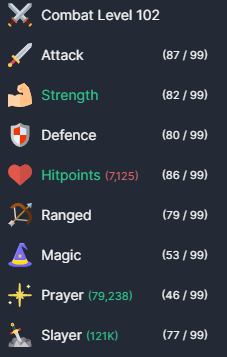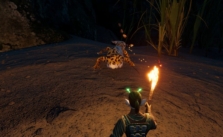Melvor Idle: Beginner’s Guide, Tips & Tricks

Melvor Idle is a simplistic and addictive Idle Skiller with more late-game depth than you’d expect. Woodcutting, Fishing, and Farming are just a few of the skills that can be leveled. There are also a variety of monsters to kill, items to craft, rare pets to obtain, and dungeons to conquer. To advance, you’ll need to upgrade your equipment.
The majority of your progression will be done Offline while leveling up your various gathering/crafting skills. These will help build up your $$$ and provide you the ability to make the majority of your own equipment and consumables. As you progress from killing plants and chickens to killing gods, you will feel it. This guide will cover some of the game’s essentials, which will undoubtedly help beginners.
Tips & Tricks
- Fishing is a great first skill to level in Melvor Idle because it allows you to catch raw fish that you can cook for food. Treasure Chests are unique objects that can be discovered by Fishing or dropped by Giant Crabs.
- While fighting monsters, you can find equipment, but starting combat without weapons or armor is difficult. You’ll need to do some mining to gather ore, then move on to Smithing to craft weapons and armor using the ore you just collected. You can equip your basic armor and weapons from the Bank and start fighting Monsters now that you have them.
- Smithing is commonly leveled by turning your best ore into bars and crafting the highest level gear you can. Once your Smithing level is high enough to make Mithril Bars, you should convert all of your Mithril Ore into Mithril Bars. Once Mithril Platebodies are unlocked, equip Smithing Gloves from the Shop and Smith Mithril Platebodies until you reach 99 Smithing.
- You’ll only be able to fight for a short time without food before having to wait for your health to regenerate naturally. Food allows you to heal while fighting, allowing you to continue fighting without stopping. Cooking (which requires Fishing and some Woodcutting) and Farming (which requires Seeds obtained through Thieving in the early game) are two ways to get food. To use Cooking for food, you must first catch raw fish with Fishing, then cut a few logs with Woodcutting to light a fire with Cooking to cook the raw fish. You now have some food, which you can equip from the Bank, and you’re fully prepared for combat with your other gear.
- Fertilizing, Planting, and Harvesting do not interrupt other skills, so you can Farm and do other things simultaneously. Farming is one of the quickest ways to obtain food, which is used for combat healing. Farming is also the only way to get the Herbs needed for Herblore potion brewing.
- Your belongings are stored at the Bank. To upgrade, sell, or equip your items, go to the Bank screen. Weapons and armor have stats that can be viewed by selecting them in the Bank and then clicking the View Item Stats option from the pop-up menu. The item stats screen shows information about the item as well as a comparison of its stats to any other item in the same slot.
- Pickpocketing for GP and items is possible with Thieving. Thieving Gloves are an expensive way to level Thieving faster and are sold in the Shop. They give you a +10 percent success rate when equipped. The Chapeau Noir hat can only be obtained through thievery, and it is arguably the best way to get Seeds. Thieving the Farmer unlocks at level 30, and they’ll be your top focus for the rest of your time with this skill. Only successful Pickpocket attempts will earn you experience.
- Damage enemies with weapons and magic to level combat skills. Match your Attack Style icon to the relevant Combat Skill to train a specific Combat Skill. Even if the appropriate style is not selected, most Combat Skills have a passive effect.
- Silver Bars, Gold Bars, and GP can be used to upgrade certain types of armor. Before upgrading to (G) with Gold Bars and GP, an armor piece must first be upgraded to (S) with Silver Bars and GP. The (G) prefix indicates that the armor has been fully upgraded and cannot be upgraded again. Upgrades to low-tier armor are comparatively cheap, so there is little risk in doing so.
- Some magical weapons and amulets can be upgraded if you have the necessary ingredients, which are usually multiples of the upgraded item.
- Players can change various options for the game on the settings page, such as notifications, auto restart dungeons, dark mode, and save management. These options can be found near the bottom of the left menu. Hover your mouse over the settings for a more in-depth explanation of their effects.
- Crafting is used to make leather/hide armor, rings, and necklaces. Ranged attacks are strengthened by wearing leather and hide armor. Using Crafting to turn Bars and Gems into Rings and Amulets is less profitable than selling raw materials.
- The majority of creatures are melee monsters, and magic is extremely effective in killing them. It has a high level of precision, making it a worthwhile skill to learn. Since most creatures have a low Magic evasion, you can hit them easily. Furthermore, Ancient Magiks have the most DPS of any class in the game.
- As the player’s Firemaking skill level rises, they will purchase higher-tier cooking fires from the Shop. In addition, the Firemaking Skillcape (purchased from the Shop after reaching Firemaking Level 99) grants a 5% global experience bonus. Furthermore, achieving 99 mastery on each log will provide additional global mastery experience.
















